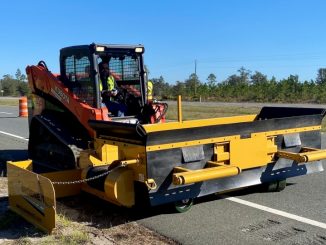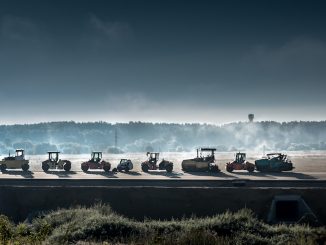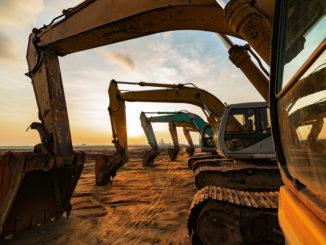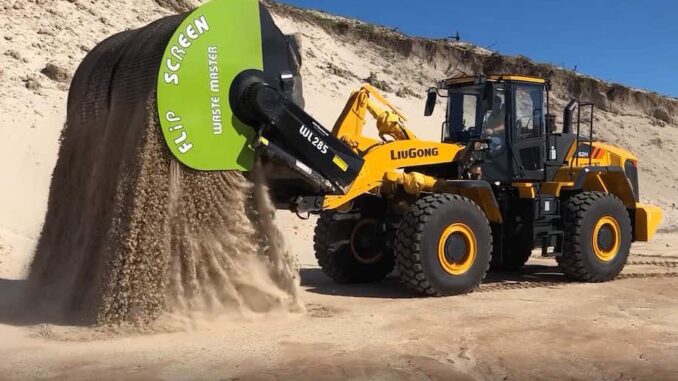
View the complete article here.
A screening bucket is a specialized attachment designed for earthmoving equipment like excavators and loaders. It operates with a sieve-like structure to sift and sort various materials, ranging from soil and sand to rocks and debris. Screening buckets are one of the most efficient—if not the most efficient—attachments offered for earthmoving equipment, offering a variety of benefits such as facilitating on-site material processing, enhancing efficiency, and reducing transportation costs.
Here’s ten crucial bits of information you need to know about these highly-effective attachments…
An Ingeniously Crafted Attachment
A screening bucket is an ingeniously crafted attachment designed to integrate seamlessly with earthmoving machinery such as excavators and loaders. Its primary purpose lies in its sieve-like structure, allowing for the systematic sifting and sorting of materials. Whether it’s loose soil, fine sand, hefty rocks, or other construction debris, the screening bucket’s robust design ensures that only the desired materials are collected while the unwanted are filtered out.
Variety in Design
Screening buckets aren’t one-size-fits-all. Manufacturers offer various designs, each catering to specific needs. For example, rotating drums are excellent for bulkier materials and ensure even sorting. On the contrary, oscillating shafts can effectively separate finer materials with precision. Vibrating panels, on the other hand, work wonders in quickly moving along and sorting materials. Your project’s nature, combined with the materials at hand, will be the deciding factors in choosing the appropriate design.
Enhanced On-Site Efficiency
Timing and efficiency are everything when it comes to construction projects. With the screening bucket allowing the immediate on-site processing of materials, these attachments erase the need for transporting materials to different locations for sorting. As a result—this directly translates to fewer hours wasted in transit, fewer machinery requirements, and significant financial savings.
Customizable Screen Sizes
Versatility is at the core of a screening bucket’s appeal. Many come equipped with interchangeable screen panels or varying mesh sizes, enabling operators to adapt quickly to different sorting needs. Whether the task calls for coarse sorting or meticulous precision, the screening bucket is up to the task.
Environmental Benefits
In a time when sustainable practices are not just recommended but often required, the screening bucket proves more beneficial than ever. By drastically cutting back on the transport of materials—it results in reduced fuel usage and, consequently, decreased carbon footprints. Also, by enabling immediate reusability of materials, there’s a significant reduction in the demand for new raw materials.
A Cost-Effective Solution
Of course, every contractor wants to save money. In addition to the savings from reduced transportation, screening buckets also offer the decreased reliance on purchasing new materials. Also, by recycling materials right on-site, there’s less waste—which means reduced costs associated with waste management and disposal.
Diverse Applications
Think screening buckets cater to just construction? Think again. In the vast terrains of mining, these buckets assist in the meticulous classification of ore. Agriculture sees them refining soil for cultivation, while landscapers utilize them to rid the soil of unwanted rocks and debris. The waste management and recycling sectors also find them invaluable for segregating materials.
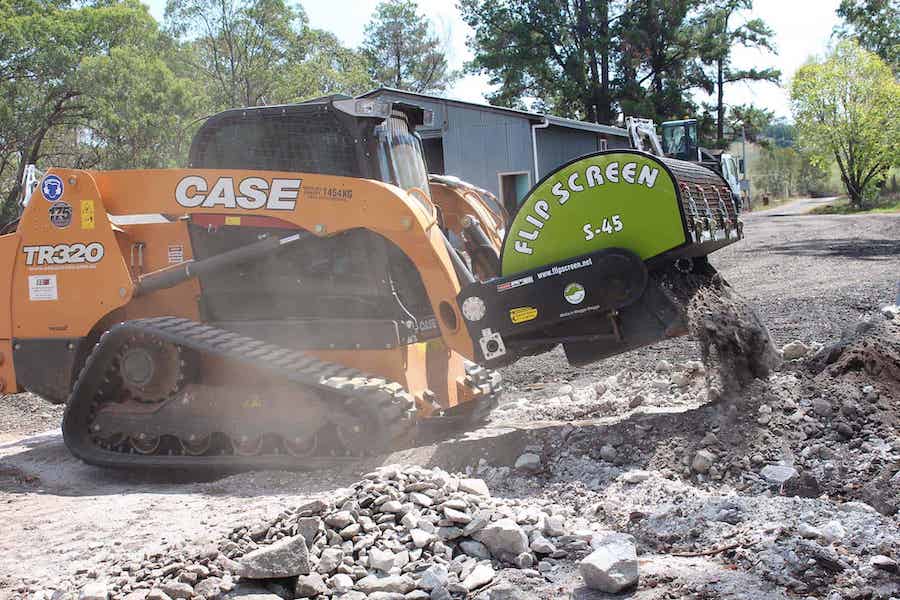
Compatibility Matters
As with all machinery attachments, it’s crucial to ensure compatibility. Not all screening buckets will seamlessly fit all machinery. Factors like weight, bucket capacity, and the hydraulic power of the equipment play pivotal roles. It is important to ensure that the screening bucket’s specifications align with the machinery’s capabilities to avoid undue wear and ensure optimal performance.
Durability and Maintenance
Needless to say, considering the abrasive nature of the materials they handle, screening buckets undergo substantial wear-and-tear. It’s crucial to invest in high-quality buckets crafted from wear-resistant materials to ensure a longer operational life. Regular maintenance routines, from inspecting screens for damage to lubricating moving parts, play a critical role in preserving the bucket’s longevity and efficiency.
Training for Optimization
Training is always recommended for any type of construction machinery. When it comes to screening buckets—training may include the best practices for efficient material loading, optimal speed adjustments to prevent material clogging, and swift screen-changing techniques. Knowledgeable operators can not only boost the screening bucket’s efficiency but also ensure a consistent quality of output.
Final Thoughts
Screening buckets have established themselves as indispensable tools in the world of earthmoving and excavation, offering an innovative solution to traditional material processing challenges. Their unique design, adaptability, and focus on efficiency and sustainability make them a no-brainer for any contractor working with dirt.
View the complete article here.
How do screening buckets enhance on-site efficiency?
Screening buckets facilitate on-site material processing, eliminating the need to transport materials for sorting, resulting in fewer transit hours, reduced machinery requirements, and significant cost savings.
What factors should be considered for screening bucket compatibility?
Compatibility involves ensuring alignment with machinery specifications, considering factors like weight, bucket capacity, and hydraulic power to prevent wear, ensure optimal performance, and avoid undue strain on equipment.






































